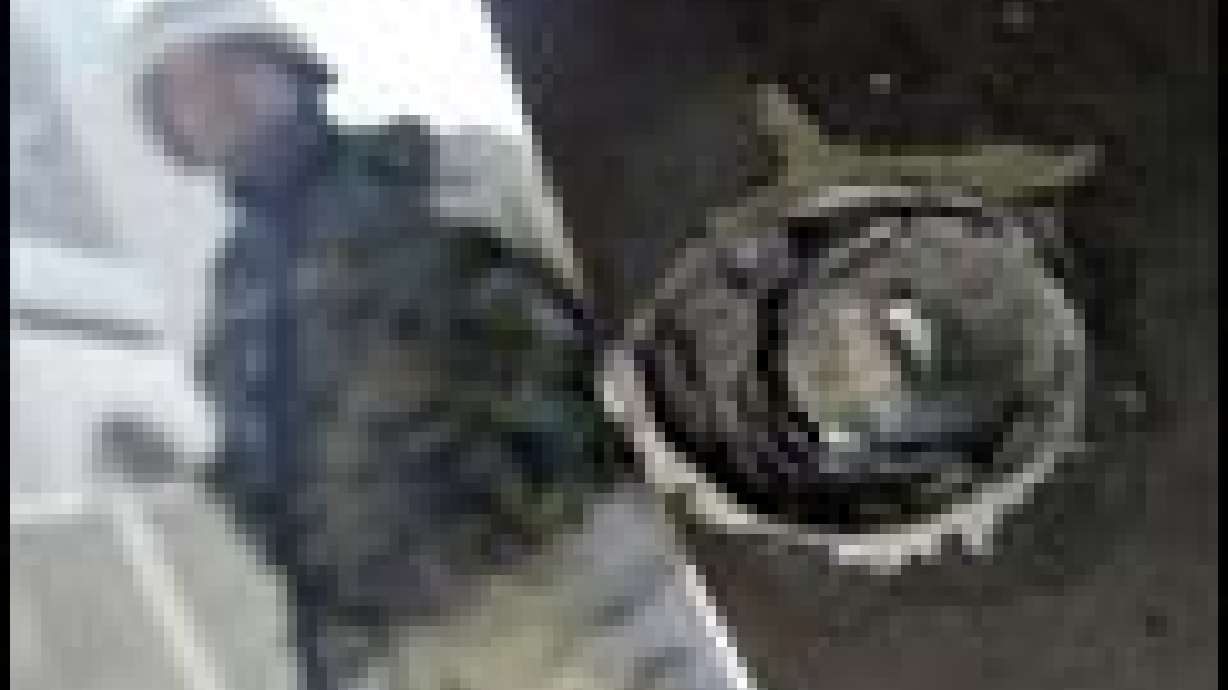Estimated read time: 4-5 minutes
This archived news story is available only for your personal, non-commercial use. Information in the story may be outdated or superseded by additional information. Reading or replaying the story in its archived form does not constitute a republication of the story.
BAGHDAD, Iraq (AP) -- Saddam Hussein loyalists rioted in Baghdad, ambushed a U.S. patrol in Samarra, stormed the office of a U.S.-backed mayor in Fallujah and battled American troops in Ramadi as cities in Iraq's `Sunni Triangle' region seethed over the ex-dictator's capture.
As soldiers fought off angry protesters and guerrilla attacks Monday night and Tuesday, the 4th Infantry Division said it had snared a leader of the insurgency and 78 other people in a raid north of Baghdad, not far from where Saddam was captured three days earlier.
A roadside bomb wounded three American soldiers in Saddam's hometown of Tikrit, and a pro-Saddam demonstration in the northern city of Mosul ended in violence, with a policeman killed and a second injured.
President Bush said Saddam deserved the "ultimate penalty" but it would be up to the people of Iraq to decide whether he should be executed. In an interview with ABC News, the president also said Iraqis are "capable of conducting the trial themselves."
The United Nations, the Vatican and many countries worldwide -- especially in Europe -- oppose putting Saddam on trial before any court that could sentence him to death.
The chairman of the Joint Chiefs of Staff, Gen. Richard Myers, said in Baghdad on Tuesday that military planners were preparing for American troops to stay in Iraq for up to two more years despite capturing the former Iraqi leader.
The 4th Infantry Division raid in the village of Abu Safa, near Samarra and about 60 miles north of Baghdad, began late Monday after insurgents in Samarra ambushed U.S. forces. The U.S. military said its troops killed 11 of the attackers, who released a flock of pigeons to signal one another that the American patrol was in range. No Americans were hurt.
By early Tuesday, U.S. troops arrested Qais Hattam, the No. 5 fugitive on the 4th Infantry's list of "high value targets," said Capt. Gaven Gregory of the division's 3rd Brigade. The guerrilla leader was described as a major financier of insurgents who have been fighting the U.S.-led coalition for months.
Maj. Josslyn Aberle, spokeswoman for the 4th Infantry, said all those captured in the raid were in one room and apparently conducting a meeting to plan future attacks.
She said U.S. forces also seized a substantial weapons cache.
"We got a significant amount of ammunition and weapons, perfect material for making IEDs (roadside bombs)," Aberle told CNN.
Hattam is not on the U.S. list of the 55 most wanted Iraqis. Thirteen fugitives from that list remain at large.
On Wednesday, the 4th Infantry said it had started a new series of raids, dubbed Operation Ivy Blizzard, in Samarra along with Iraqi security forces.
A written statement from the division said the sweep was requested by local leaders and that it would "target, isolate and eliminate former regime elements and other anti-coalition cells."
Myers, in a visit to Iraq to meet with American troops and top U.S. officials, said Pentagon planners were focusing on a U.S. military presence for the next year or two.
"Beyond that, I don't think we can make any guesses," he said, adding that a stable Iraq is the key.
Myers said he expected Saddam's capture to cause the insurgency to dwindle, but added it would take time.
"When you take this leader, who was at one time a very popular leader in this region, and you find him in a hole in the ground, that's a pretty powerful signal that you're on the wrong team," Myers said.
In the Samarra ambush, two gunmen on motorcycles opened fire on the Army vehicles and took cover among children leaving school. The attackers also used a roadside bomb, automatic weapons and rocket-propelled grenades but inflicted no casualties on the U.S. patrol, the military said.
Samarra, a volatile town in the so-called Sunni Triangle that stretches north and west of Baghdad, was the scene of an intense battle between U.S. troops and insurgents last month. American commanders claimed to have killed 54 guerrillas, but residents and police reported that fewer than 10 people -- most of them civilians -- died in the firefight.
In the restive city of Fallujah, 30 miles west of Baghdad, several hundred armed protesters carrying Saddam portraits stormed the mayor's office Monday night, forcing policemen to flee, according to witnesses and the U.S. military.
When an infantry company from the 82nd Airborne Division responded -- backed by tanks and Bradley fighting vehicles -- guerrillas attacked the Americans with rocket-propelled grenades. U.S. troops sustained no injuries and killed one attacker, the military said.
Several stores were gutted by fire or badly damaged in the clashes.
On Tuesday, thieves looted a U.S. Army supply train near Fallujah.
In another pro-Saddam demonstration, a military statement said soldiers in Ramadi, 60 miles west of Baghdad, killed three protesters and wounded two others Monday, after as many as 750 people rallied in a show of support for Saddam.
The statement said U.S. troops were fired on repeatedly and that one soldier was wounded.
Lt. General Ahmed Kadhem, deputy Iraqi interior minister and Baghdad chief of police, said pro-Saddam rioters in Al-Adhamiya neighborhood in Baghdad exchanged fire with the police late Monday. Four civilians were killed and two policemen wounded, he said.
(Copyright 2003 by The Associated Press. All Rights Reserved.)









